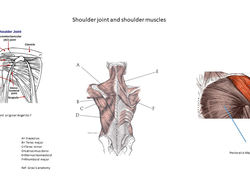Shoulders: exercises to do at home
Published: January 24, 2020
What do your shoulder joints and their associated muscles do for you?
A major function is the attachment of your arms to your torso.
Your shoulders enable many different activities that involve lifting, pushing, pulling, and throwing.
Your shoulders also stabilize your upper body while you use your forearms and hands for a variety of activities of daily living such as using a computer, tablet, cell phone, preparing meals, cooking, sewing, and knitting.
Sports and other physical activities may also require shoulder involvement. In addition to these action orientated activities your shoulder muscles also act to maintain your posture and balance.
If you have ever injured your shoulder so that it was immobilized you may have noticed how much this affected your daily activities such as lifting shopping bags or children, gardening, or moving furniture.
Each of your shoulder muscles has a specific function that enables movement at your shoulder joint and many movements require several of these muscles to work together.
As with any muscle your shoulder muscles can be over or under worked, or become over stretched or too tight which can adversely affect your movement and in some cases your overall health.
Various occupations which entail sitting at a desk for long periods of time, doing repetitive movement such as checking groceries, or cleaning windows can lead to overuse injuries if any or all of your shoulder muscles are not functioning properly.
How can you keep your shoulders healthy and in good working order?
Read on to learn about your shoulder joint and the muscles which stabilize and enable movement at this important joint, and what you can do to keep these muscles healthy and avoid injury.
As with all our articles on strength and endurance training we focus on basic principles of training at beginner to moderate levels of achievement to assist activities of daily living.
Should your goals require more advanced training for specific sports activities we suggest you obtain the services of a personal trainer...Link to the full article to learn more.
References
1.
Corbin, C.B. & Lindsey, R. (1994). Concepts of Physical Fitness. Dubuque, IA: Wm. C. Brown Communications Inc.
2.
American Council on Exercise (1996). Personal Trainer Manual. San Diego, CA: American Council on Exercise

